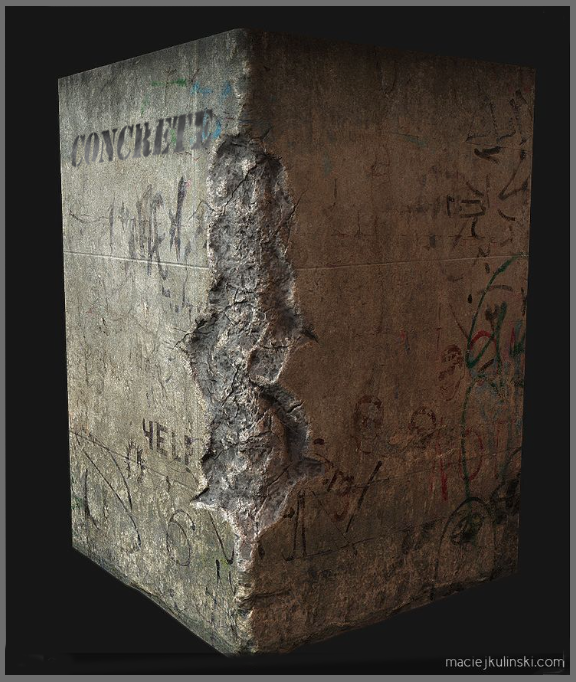
A lot of us are looking forward attending to this event in California. It is part of the 2015 Stone Symposium. And yes it's not exactly stone subject matter but still very stylish and it is sure to inspire.
Hope to see you there!
-----------------------------------------------------------------------------------------------------------------------------------
CREATIVE COLLABORATION – Honoring Millard Sheets: Master of Art & Design
Millard Sheets
A day-long event honoring artist Millard Sheets
Thursday, January 14, 2016 from 8:30am to 5:30pm
Scottish Rite Masonic Center, 19th Ave & Sloat, San Francisco, CA
Make reservations online -- see details below
January 14—prior to Stonework Symposium 2016 in San Francisco, CA
Location: Scottish Rite Masonic Center
19th Ave & Sloat, San Francisco, CA
(directly across from Stern Grove Amphitheater)
19th Ave & Sloat, San Francisco, CA
(directly across from Stern Grove Amphitheater)
Advanced registration required online at Brown Paper Tickets:
$20 Lectures & Lunch (includes Lectures, Tours and Lunch – no reception)
$35 Lectures & Reception (includes Lectures, Tours and Reception – no lunch)
$50 Lectures, Lunch & Reception (includes Lectures, Tours Lunch and Closing Reception)
$0 Lectures and Tours ONLY — free (does NOT include lunch or reception)
Registration requested by January 7
$20 Lectures & Lunch (includes Lectures, Tours and Lunch – no reception)
$35 Lectures & Reception (includes Lectures, Tours and Reception – no lunch)
$50 Lectures, Lunch & Reception (includes Lectures, Tours Lunch and Closing Reception)
$0 Lectures and Tours ONLY — free (does NOT include lunch or reception)
Registration requested by January 7
Free lectures & tours and no host lunch & reception are offered to Stone Foundation members, Gualala Arts members, Tile Heritage Foundation members, invited guests, and the public at large.

Millard Sheets, 1948 Studio Portrait for LIFE Magazine
MILLARD SHEETS, painter, educator, muralist and architectural designer, was an all-inclusive artist who collaborated freely with his fellow artists. This resulted in the construction of buildings and the creation of tile and mosaic murals, artistic masterpieces across the United States, with artwork, inside and out, as an integral part of the design. The work was created by many artists, masters of all media, working together.
On Thursday, January 14, 2016, art enthusiasts will gather at the Scottish Rite Masonic Center in San Francisco—a building designed by Millard Sheets.
Peter Mullins, Stone Foundation member and sponsor of the day’s events, believes “Millard Sheets is the single most influential individual in art in California in the 20th century.”
This day features artist Tony Sheets, Millard Sheets’ son, accompanied by colleague Jim Cogan sharing their personal stories; Adam Arenson, Associate Professor of History at Manhattan College, chronicling Sheets’ accomplishments; and Lillian Sizemore, accomplished mosaicist, scholar, and author of “A Guide to Mosaic Sites: San Francisco”; plus others.
The presenters’ mission will be to share their stories and talents in a collective atmosphere in which Millard would have eagerly been a participant. Craftsmen and artists working in related mediums (stone, tile) will amaze visitors with their stories and displays in a day of discovery.
Tours to the magnificent stone walls at Stern Grove Amphitheater and to nearby historic tile installations are also in the offing.
The Tile Heritage Foundation, Gualala Arts Center, Stone Foundation, The Scottish Rite Masonic Center and other Sheets enthusiasts are supporting this day of events.
Please join us in this one-of-a-kind adventure into the world of Millard Sheets. More details to follow.
Additional information available: www.GualalaArts.org and www.tileheritage.org

Millard Sheets at work on Notre Dame Mural Panel
Schedule of Events
8:30-9:00 Informal reception with coffee/tea and cookies
9:00-9:30 Welcome to the Scottish Rite Masonic Center
9:30-9:45 Introduction to the day’s program and to the first speakers.
Peter Mullins, Tony Sheets, Jim Cogan
9:45-10:30 A Tapestry of Life: A Storytelling Journey into the World of Millard Sheets with Tony Sheets and Jim Cogan
10:30-11:00 Break: coffee/tea and cookies
11:00-11:15 A Tapestry of Life (continues) with Tony Sheets and Jim Cogan
11:15-12:15 California Modern: Art and Architecture from the Millard Sheets Studio with Adam Arenson
12:15-1:45 Lunch followed by tour options (each 30-45 minutes)
– Tour of Masonic Center with Rick Capellino
– Tour to Stern Grove Amphitheater
– Tour to local Millard Sheets installation with Joseph Taylor
1:45-2:00 A Tapestry of Life (continues) with Tony Sheets and Jim Cogan
2:00-3:00 Millard Sheets and the Tree of Life: A Case Study in Northern California with Lillian Sizemore
3:00-4:00 Millard Sheets: Master of Art & Design
A Panel Discussion with David “Sus” Susalla as moderator:
Adam Arenson, Rick Capellino, Jim Cogan, Tony Sheets and Lillian Sizemore as panelists
4:00 Closing remarks
4:00-5:30 Reception with Presenter’s offerings

Host
Peter Mullins, a stone and tile advocate and collector, Stone Zone, Gualala, California
Peter Mullins is a native of San Francisco and a resident of Gualala (the home of Millard Sheets for 28 years). He is a member/supporter of the Stone Foundation, which is holding its 14th Symposium beginning January 15th in SF; the Tile Heritage Foundation, leading the effort of this presentation; and the Gualala Arts Center, where the Stone Symposium will continue beginning January 18th for 10 days. Peter is currently working with the City of San Francisco to reduce/remove a wall of ficus trees blocking a series of Sheets’ mosaics on the Chase Bank building at Van Ness and Lombard. Resulting from his extensive research into the life and accomplishments of the artist, he has concluded ”Millard Sheets is the single most influential individual in art in California in the 20th century.”
Presenters
Tony Sheets and James Cogan
Title: A Tapestry of Life: A Storytelling Journey into the World of Millard Sheets (60 minutes includes Q&A)
Tony Sheets, the youngest of the four Sheets’ children, is an accomplished artist with a passion for both painting and sculpture. A collaborator by nature and training, Tony works with other artists and clients to create artworks to suit their needs. Growing up among a community of artists in Southern California, he apprenticed at many different studios representing numerous mediums, which has enhanced his appreciation for the arts in general. Today in addition to serving as designer and director of the Millard Sheets Center for the Arts at the Los Angeles County Fair, Tony is engaged in saving installed artworks by his father and other artists, thus far relocating six of Millard’s large painted murals, with more to come.
James Cogan, a professional storyteller for 28 years, historian-educator-journalist, weaves a web of fascinating stories into an exciting narrative that illuminates both the personal and professional highlights of the life of Millard Sheets. A close friend of Tony Sheets, Millard’s son, Jim creates a tapestry of some of the more memorable and influential moments of this consummate icon of American art. Jim continues to collaborate with Tony Sheets to celebrate Millard’s life at numerous venues throughout the state. An award-winning spoken word artist, Jim is a member of the National Storytelling Association and has been featured at the National Storytelling Festival and numerous festivals and conferences across the West.
Adam Arenson, Associate Professor of History and Director of the Urban Studies Program, Manhattan College
Title: California Modern: Art and Architecture from the Millard Sheets Studio (60 minutes includes Q&A)
Adam Arenson, a California native, is an associate professor of history and the director of the urban studies program at Manhattan College. He is finishing a book about Millard Sheets’ art and architecture and preparing a museum exhibition of studio artifacts. Arenson has interviewed more than 60 people involved in the creation and preservation of the artworks and visited more than 100 of the locations in six states. His research on Sheets has appeared in documentaries, newspaper profiles, and on his research blog, adamarenson.com. His previous books include The Great Heart of the Republic: St. Louis and the Cultural Civil War and Civil War Wests: Testing the Limits of the United States, which was accompanied by a museum exhibition.
Lillian Sizemore, Mosaic Detective and mosaic subject-matter expert
Title: Millard Sheets and the Tree of Life: A Case Study in Northern California (60 minutes includes Q&A)
A glittering golden mosaic discovered in a private home in Gualala, CA sheds light on the importance of the ‘Tree of Life’ motif for the Sheets Studio. Speaking from a maker’s point of view, Lillian situates this mosaic within the context of Sheets’ other work, including examples of the ‘Tree of Life’ from ancient to contemporary times. Trees are our friends. The Gualala mosaic can be viewed as part of the Stonework XIV Symposium.
Lillian Sizemore uses her hands-on insights as an accomplished mosaic maker to enhance scholarship on the transmission of mosaic knowledge from its European traditions to midcentury America. When she moved to San Francisco in the mid-1990s, the mosaic murals and architecture of Millard Sheets sparked her curiosity and inspiration. She began making study trips to Southern California where she befriended Denis O’Connor (1933-2007), who had worked with Millard since 1960, helping him to document the Home Savings murals and organize his vast photographic archive. In addition to her many published articles, Lillian has lectured and offered demonstrations at a number of prestigious institutions in the U.S. and abroad. She is a doctoral researcher at the Prince’s School of Traditional Arts in London. LillianSizemore.com
David “Sus” Susalla, Executive Director, Gualala Arts
Title: Millard Sheets: Master of Art & Design. A Panel Discussion (60 minutes includes Q&A)
David “Sus” Susalla, who will serve as moderator for the panel discussion, grew up in Detroit where he attended numerous theater, jazz and chamber music concerts fueling his passion for the arts. Since 2004, this passion has been channeled into a career as Executive Director of Gualala Arts. Millard and Mary Sheets, who established an oceanfront compound in Gualala in 1960, were instrumental in creating a thriving arts community over the years and thus the obvious connection to the local and vibrant Arts Center. Four generations of the Sheets family have gathered at the Arts Center they help build.
Panelists: Adam Arenson, Rick Capellino, Jim Cogan, Tony Sheets and Lillian Sizemore

Millard Sheets at the easel
























